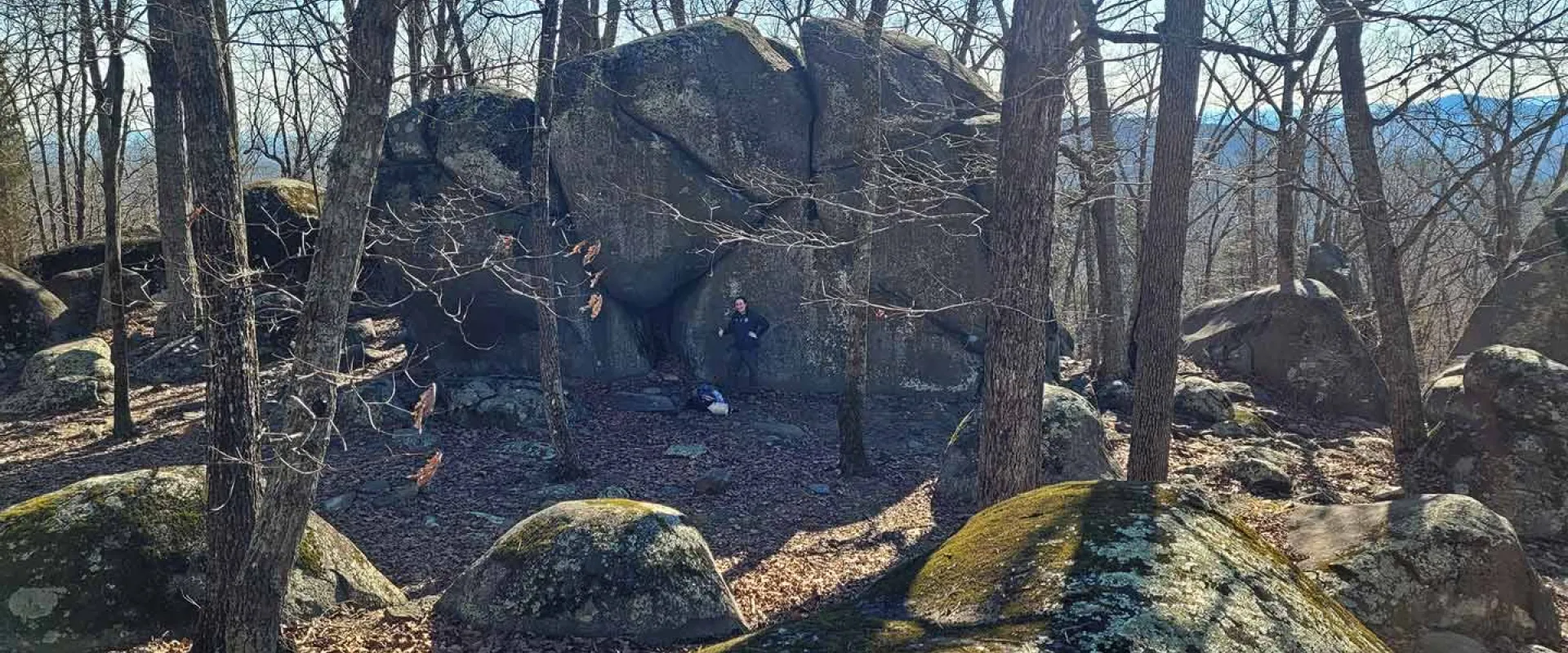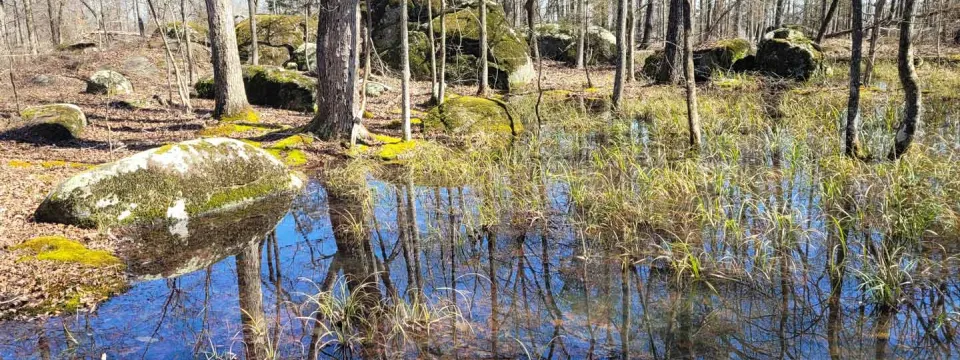Written by Betsy Roznik, PhD, Associate Curator of Regional Conservation, North Carolina Zoo
About 10 miles west of Asheboro, North Carolina, lies a hidden gem called Ridge’s Mountain Nature Preserve. This 284-acre preserve, which is managed by the North Carolina Zoo and Piedmont Land Conservancy, has a little something to capture the attention of every nature enthusiast, from the ephemeral pools that attract amphibians to the interesting rock formations and spectacular views from the summit. History buffs will also appreciate the historical significance of the site’s occupation by both Native Americans and early settlers.
Named for Godfrey Ridge, the owner of the trading post that once stood on the land, Ridge’s Mountain is part of the Uwharrie range and reaches 840 feet in elevation. The mountain was located along the Great Trading Path, an expansive trading network extending from Virginia to Georgia that existed before European settlement. Archaeological digs have uncovered a Keyauwee village at the base of Ridge’s Mountain and more than 250 other archaeological sites in the vicinity that represent 3,000 years of human history.
In addition to the rich human history, the natural history of Ridge’s Mountain is also spectacular. The site contains uncommon natural communities of high quality including basic oak-hickory forest, Piedmont monadnock forest, upland depression swamp forest, and upland pools. The mountain consists of mafic volcanic rock, which forms basic soil that supports plant species that are different than those found on the more typical acidic soils of Randolph County.
Pictured Above: This upland pool fills with water each winter and provides important breeding habitat for many amphibians and invertebrates.
A chain of upland pools on Ridge’s Mountain provides excellent breeding habitat for amphibians, especially marbled salamanders and spotted salamanders. These pools are seasonal and will usually dry up during the late spring and stay dry until the next winter. The temporary nature of these pools prevents colonization by fish, which can prey on salamander eggs and larvae. These salamanders spend most of their lives underground and are rarely seen, except during the breeding season when they migrate from their burrows to the pools.
Ridge’s Mountain is surrounded by other forested land and provides unfragmented, roadless habitat for many species of wildlife. Protecting large areas of land is important because they can support larger, healthier populations and provide enough space for animals with sizeable home ranges. Large mammals, such as bobcats and white-tailed deer, have been observed on the mountain, and the rocky areas provide den sites for red foxes. Ridge’s Mountain is home to many other species and provides excellent habitat for those that require mature forest, such as the Eastern box turtle and pileated woodpecker.
Pictured Above: On rainy nights in early spring, spotted salamanders (Ambystoma maculatum) leave their burrows and migrate to ephemeral pools to breed.
Ridge’s Mountain Nature Preserve is a biological, geological, and historical treasure, and visitors can explore this hidden gem by hiking the two-mile trail that follows the ridgeline of the mountain and then loops back down. The trail passes by several upland pools and an old stone wall, and then leads to a monadnock forest at the summit that is strewn with massive boulders that are up to 50 feet tall! The summit also offers breathtaking views of the surrounding landscape. Access to Ridge’s Mountain Nature Preserve is available to the public by online reservation.





